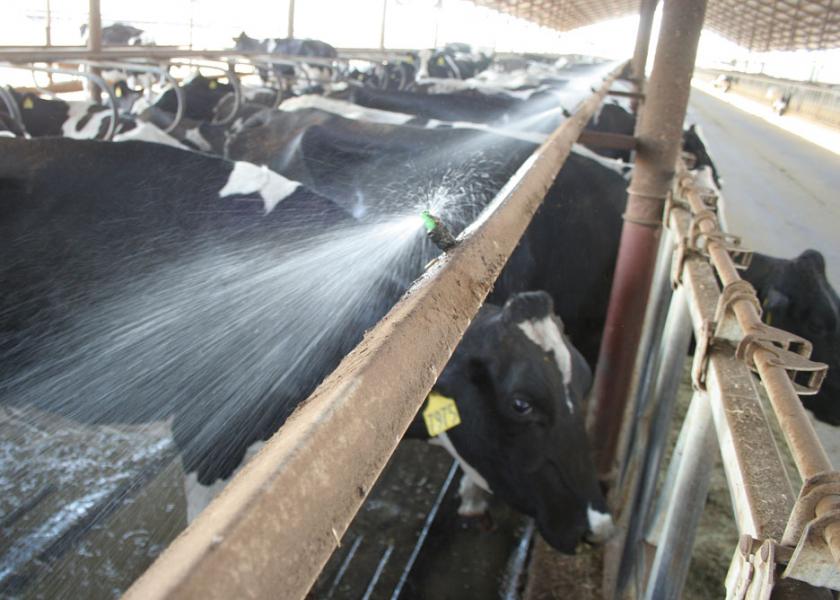In places like Florida, people aren’t the only ones who need to stay cool. Cows have a body temperature that ranges between 100.0°F (37.78°C) and 102.5°F (39.2°C). That’s not much different from we humans, who have an average body temperature of 98.6°F (37.0°C). With people, of course, hot temperatures cause us to perspire, or sweat.
So, how do cows stay cool when the temperature rises?

When the ambient temperature is less than body temperature, it’s easy for cows to lose heat. Scientifically, it’s about thermodynamics. Heat, which is the flow of thermal energy, always moves from a warmer to a colder object. Winter mornings in places like Florida can be cool, so it’s easy for a cow that’s moving around and heating up to get rid of all that excess heat.
But what happens when it’s warmer? Unlike humans, cows sweat very little. Perspiration leads to evaporative cooling (especially when the wind is blowing), but there’s another way that cows cool off – and it’s an issue for the dairy industry. To understand it, think about your own appetite in the cold of winter and the heat of summer. When it’s cold, you probably eat more.
Ultimately, it’s about calories – the energy needed to raise the temperature of 1 gram of water 1°C. Just like you, a cow needs more calories when it’s cold. As we explained previously, a cow produces heat (and methane) during the digestive process. Cutting back on eating during warm weather reduces internal heat, but it also cuts milk production.

That’s why the dairy industry uses sprinklers and fans. The sprinklers wash the cows’ udders, but they produce a cooling mist, too. Newer barns have improved ventilation and are oriented to optimize heating and cooling. Because the sun travels from east to west, farmers and ranchers in Florida build feeding barns east-to-west so that only the ends of the barns face direct sunlight, in morning and afternoon.
Would you like to learn more about heat stress in cattle? The University of Florida has some great graphics.